In a previous post I mentioned harnessing the power from Power Over Ethernet (POE) systems, I've got a couple of hardware projects lined up that I want to take advantage of this on so I've been on the look out for POE ethernet splitters for a while.
Some time ago I accidentally purchased 2 POE switches from eBay, these are both 10/100 Mb switches and cost less than £100 a piece (gigabit POE switches are a lot more). As luck has it none of my projects require gigabit ethernet and as companies upgrade their 10/100 POE networks to be Gigabit hopefully a lot more 10/100 POE switches will appear on the market.

The real problem has been at the other end of the cable, extracting the power. A number of devices are available as “PD” Powered Device, these include VOIP phones (the common use), small switches/hubs and WiFi access points. Sadly thats about it so far.
For a while you have been able to purchase POE injectors and splitters, however these tend to need to be paired together and don't use the power from the switch, rather they have their own seperate power supply. It's important when looking for a splitter to ensure that it's 802.3af compliant so that it will work from a POE switch.
The Problems:
I have projects I want POE for.
- Supplying power to my ADSL router
- Supplying power to an Arduino
- Supplying power to a Meridian/P running the .NET micro framework.
Neither the Arduino or Meridian/P have a shield that extracts the power from the ethernet connection, which is a real shame as it's fairly simple to do at that level, and an ideal way to power remote devices. As for my ADSL router, well theirs little chance of getting a PD version of that.
Why power the ADSL router from POE?
- Firstly my switches are all powered via a UPS, so if the power goes down the network stays up, except for the ADSL router (which also does DHCP for my network) and I wanted that kept alive during brownouts – a dedicated UPS isn't all that cheap or small, and I've found that with the cheaper ones even a brief brownout will cause the router to reboot or get it's self locked up.
- The power adaptor for the router wastes about 7W of electricity, it uses 9W when powderer off the mains of which 7W is lost though the adapter alone. If the device is connected via a POE switch the switch usage goes up by only about 2W. (OK, granted the switch uses 30W by it's self, but once you have a few devices running from POE that is soon recovered).
- I'm fortunate that I have a power socket right by my telephone master outlet. The closer you can get the router to the master socket the more likely you are to get a better speed. If you don't have a power outlet using a POE system where you connect up just via a CAT 5 network connection can be useful.
As for my Arduino and Meridian/P project, well they want data and power so a POE solution is idea, and the uses of these (internal lighting) benefits from having a UPS so that light can be supplied during a power outage.
The Solution
D-Link are selling a DWL-P50 which is perfect for my ADSL router and initial prototypes for both of my projects. A quick check on eBay and I found a POE splitter being sold from China that looked like a good match as well.
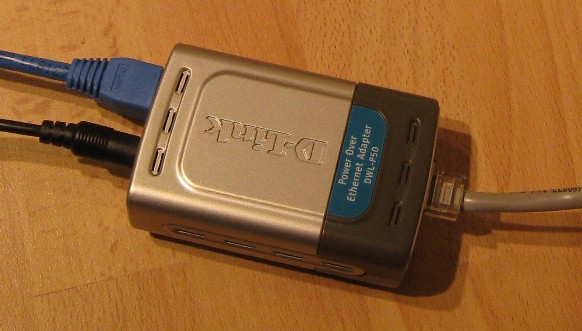
I was able to get the DWL-P50 from Amazon and it arrived in a couple of days of ordering. With this device you can run power over a 100m stretch of CAT 5, it will supply 5V at 2.5 Amps or 12V at 1 amp. The Arduino and my ADSL router will work happily from the 12V supply, but you do need to switch the Arduino over to ext rather than USB for it's power.
So here it is in action, note the light on the Arduino indicating it's powered up.
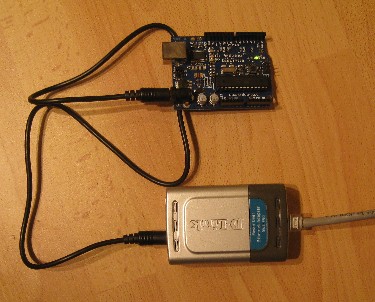
you can also connect up the Arduino with a ethernet board
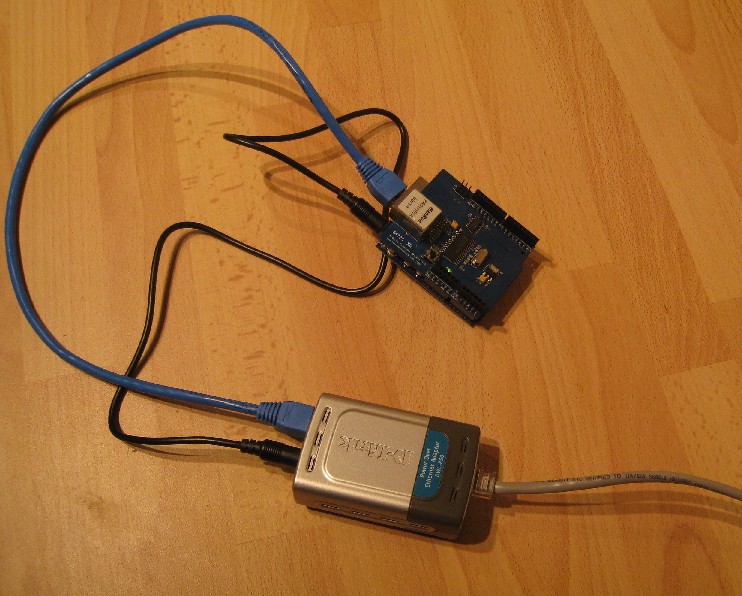
One of the nice things about using a POE switch is you can control and measure the power from the switch. Here my Arduino is connected to the 3COM 2226-PWR Plus switch.
With just the DWL-P50 connected it's drawing 300mW
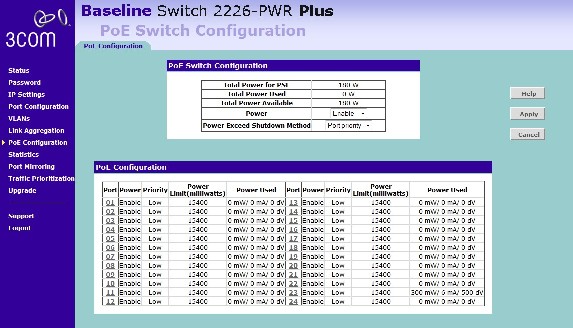
With the Arduino and Ethernet shield connected up it's drawing 3000mW
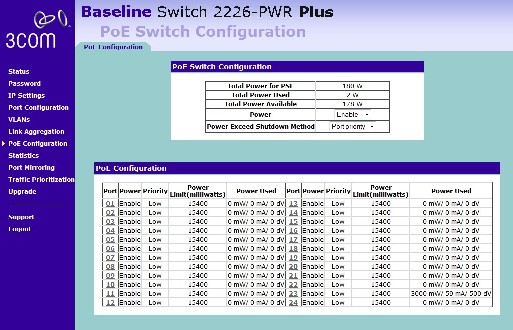
and just the Arduino if your interested in power and not data, it pulls 700mW (that's quite an expensive ehternet module in terms of power usage!)
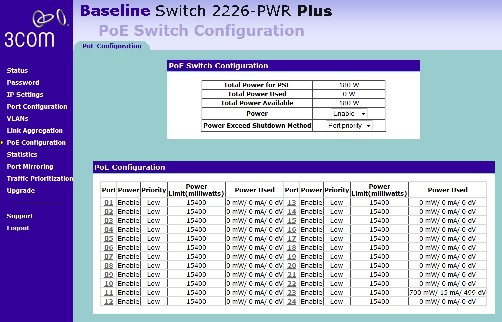
The other nice thing with the POE switch is you can also set power limits, I could limit the Arduino to 4000mW so any fault and it would be isolated automatically by the switch.
So there you have it, powering an Arduino from a Power Over Ethernet source. Easy, reduces power wastage through power adaptors and means you only need 1 cable to your device.